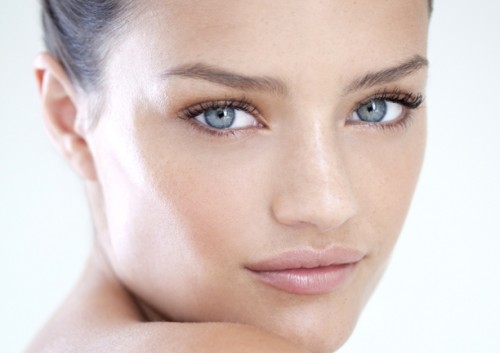Warning: Undefined array key "sharing_networks_networks_sorting" in /var/www/wp-content/plugins/monarch/monarch.php on line 3904
Warning: Trying to access array offset on value of type null in /var/www/wp-content/plugins/monarch/monarch.php on line 3904
Knowing the basics before choosing a foundation is a tough task when you don’t know where to begin. Simply matching the product’s external color to your skin tone doesn’t cut it anymore. Products are additionally broken down by undertones and skin types, which makes the world of difference in application and appearance. If nothing else, we wear makeup to enhance our natural features, but we do ourselves a disservice if we ignore the differences that each product offers.
Skin tone is not synonymous with skin type, a very common mistake many make. While ‘tone’ refers to color, ‘type’ tells us a completely different tale. In some ways, the type of skin you have makes all the difference because of the formula in products. Skin types are categorically broken down in four ways. Oily, dry, combination, and normal.
Oily skin, as its name suggests, means your skin produces more oil than others. Problem areas include, but are not limited to, your nose and forehead, especially the area between your eyebrows. Subtle oil accumulation also occurs on your cheeks and chin. So if you identify with these problem areas, you’ve probably got an oily type face. Products designated for oily types of skin tend to lack oils within the formula, because the end result would only make skin look slicker, not smoother. Key words to look out for when product shopping are ‘matte,’ meaning your skin will look shine-free. Remember: if your skin type is extremely oily, you can always apply a mattefying powder as a preventative and secondary measure.
Dry skin types are the polar opposite of oily types when it comes to product selection because items on the market aim to make your skin look dewy. Adding moisture and hydration, certain foundations won’t hold back on oils in their formula because they know your skin needs the added boost. Make the mistake of choosing an oily type product for a dry type face, and you’ll cause a facial disaster: making your skin look it spent a day in the sahara.
Combination skin types are tricky because areas in your face can produce more oil than others. For most, their nose and foreheads tend to be the target areas, while temples, chin, and cheeks stay dry. The formulas give a moderate amount of oil to balance out problem areas. But of course, if you feel like your skin leans more one way than another, you can always buy products geared to an oily face or a dry face. Just remember to moisturize your skin before if you’re more dry, and cleanse your skin prior if you’re more oily.
Normal skin types are the envy of all. With no specific problems, you can pick products created for normal types of skin, or you can buy any of the three aforementioned. Because everyone’s preference is subjective, those with normal skin types can go for a matte or dewy look; it’s all about your preference.
Undertones are a bit trickier, but once you understand how to decipher your undertone, you’ll be able to choose foundations like a pro. Undertones are the colors beneath your skin tone that give your skin tone its essential color. The importance of this is that the foundation you choose already has these preset colors, so finding the right one will only compliment you. Undertones can either be warm, cool, or neutral, and there are a couple of in-home ways to decide what you are.
1.) Check your veins in your wrist. If they appear to look blue, you’re a cool undertone. If they appear green, you’re a warm undertone. If you see both, you’re probably neutral.
2.) Which type of jewelry do you look better in? Cool undertones look better in silver toned jewelry, alternately, warm undertones look better in gold toned jewelry. And if you look good in both, first, you’re lucky, and second, you’ve got a neutral undertone.
3.) What kind of clothing do you think compliments you best? If you tend to purchase oranges and pinks: your undertone is warm. If you tend to purchase blues and purples: your undertone is cool.
Foundations aren’t about simply choosing a color that matches your skin. Undertones and skin types play a major role in the selection process. Remember, we all want one thing when we apply makeup: to enhance our natural beauty. But the wrong choices can counter that aspiration, so be informed and cater to your skin’s needs!
-By Yasmine Rimawi


